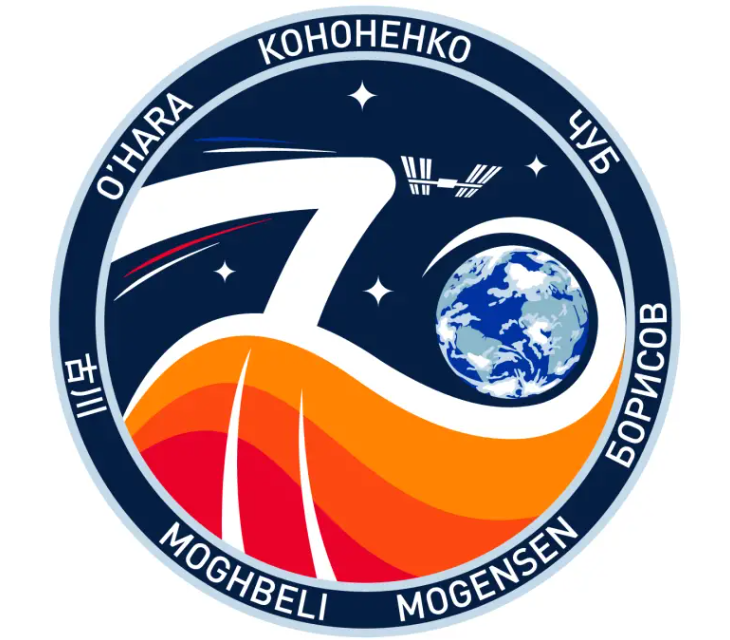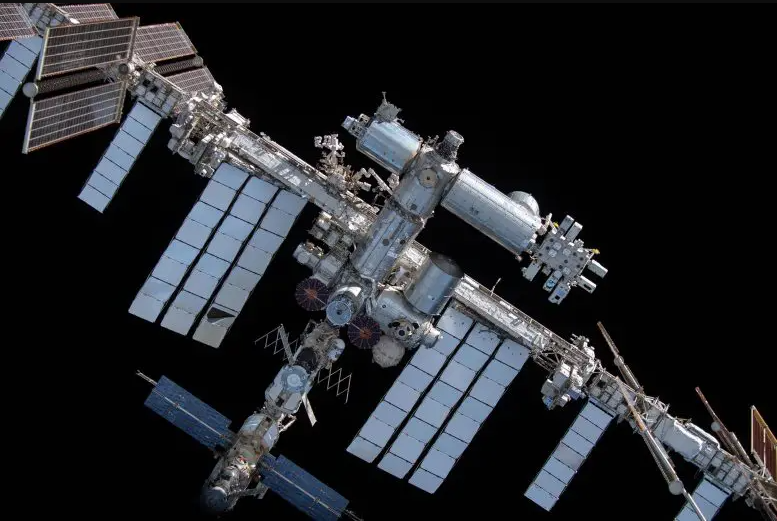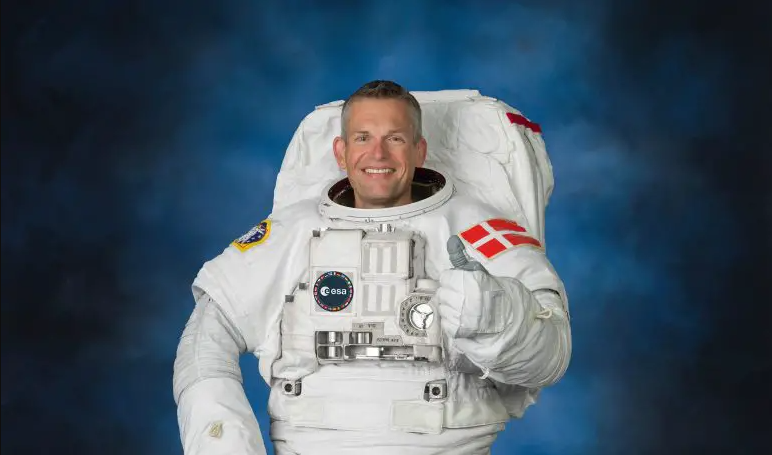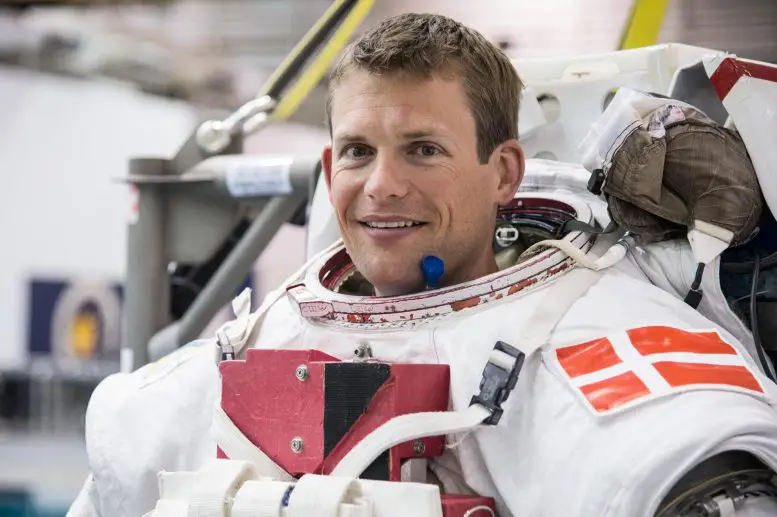On September 26 at 15:43 CEST, ESA astronaut Andreas Mogensen assumed command of the International Space Station, becoming the sixth European to do so
Astronaut Andreas Mogensen
Andreas has been performing scientific research and technology demos from all over Europe while in space for about a month now: Understanding how he sleeps in orbit, monitoring his health, and taking pictures of lightning from space Andreas will continue to do science throughout the voyage, but his big moment has come: he will lead Expedition 70 of the International Space Station. Andreas will hold the position and the duties for the remainder of his Huginn mission, making him the longest-serving European commander.
ESA astronaut Andreas Mogensen became commander of the International Space Station (ISS) on September 26, 2023, in a traditional ceremony in which the departing commander, Sergey Prokopyev, handed over the symbolic key of the Space Station. Mogensen is the sixth European to take on the role of ISS commander. Mogensen will serve as commander for the rest of his Huginn mission until early 2024. During his command, he will be responsible for overseeing the crew’s activities and ensuring the safety and operation of the Space Station. Credit: ESA/NASA
It is wonderful to have Andreas in charge of the ISS. Astronaut Andreas is the sixth European astronaut to fill this position, which is a testament to the calibre of our European astronauts from our international partners. The fact that Andreas has served as the longest-serving European Commander and that Europe is taking the lead in space makes me delighted. ESA’s Director of Human and Robotic Exploration, Daniel Neuenschwander, wishes him and the Expedition 70 crew a successful and enjoyable stay on the International Space Station.
Being Responsible for the Crew
As the Space Station’s commander, Andreas will be in charge of leading the crew as a cohesive one and overseeing their safety, health, and well-being. He will co-ordinate all activities and operations on the Space Station with the flight director on the ground.
Numerous cargo ships will be sent while Andreas is the commander, along with Axiom-3, which will carry ESA project astronaut Marcus Wandt to the Space Station. For the first time ever, two Scandinavians will be in space together.

SOURCE:The patch for Expedition 70, designed by ESA graphic designers Hugo Simões and Hugo Dias, is based on ‘yin yang’, the well-known philosophical symbol of balance between two complementary forces— yin and yang —that make up all aspects and phenomena of life. In this depiction, the red and orange tones in the lower half of the patch represent science and the dark blue represents space exploration in the upper half. Credit: ESA
Getting the keys
On September 26, 2023, ESA astronaut Andreas Mogensen assumed leadership of the International Space Station (ISS) in a customary ceremony during which outgoing commander Sergey Prokopyev handed over the station’s symbolic key. (See above video.) Mogensen is the sixth European to assume command of the ISS. Up to the start of 2024, Mogensen will lead the remaining Huginn mission. He will be in charge of managing the crew’s activities while maintaining the Space Station’s security and smooth operation.

Source ;The International Space Station is pictured from the SpaceX Crew Dragon Endeavour during a fly around of the orbiting lab that took place following its undocking from the Harmony module’s space-facing port on November 8, 2021. Credit: NASA
ISS Commander Overview
The International Space Station (ISS) Commander is crucial to the accomplishment of missions and the safety of the space station’s crew. Here is a summary of their duties, the selection procedure, and other pertinent information.

Source: ESA astronaut Andreas Mogensen in an EMU suit. Andreas went on his Huginn mission on the 27th of August 2023, launching as the pilot of the Crew Dragon. Credit: NASA
1. Responsibilities:
The ISS Commander has several primary duties:
Safety:The space station’s security and the crew’s safety are the Commander’s concerns. This entails making sure that protocols are correctly followed, especially in emergency situations.
Crew Management: The commander, who serves as the major figurehead aboard the space station, is in charge of directing the activities of the entire crew and ensuring that daily duties and experiments are successfully completed.
Operations: The Commander is in charge of running and maintaining the station’s systems, making sure that all of the machinery functions effectively.
Communication: The Commander is in charge of conveying information, updates, and reporting any problems or anomalies between the space station and mission control on Earth.
ALSO READ:Introducing Carbon-Based Quantum Technology: Unveiling Nanoscale Wonders
2. Selection Process:
The selection process for the position of ISS Commander is thorough, owing to the demanding nature of the role
Experience: Candidates normally have at least one spaceflight under their belts and several years of experience as astronauts. Knowledge of the ISS and how it works is essential.
Training: Potential commanders go through extensive training that covers leadership, ISS system-related technical expertise, and emergency response scenarios.
Interpersonal Skills: Strong interpersonal and communication skills are essential given the constrained confines of the space station and the requirement for effective team dynamics.
Physical and Mental Fitness: Candidates must be in top physical and mental shape to deal with the pressures and difficulties of living in space for an extended period of time.
International Collaboration: Jointly developed by NASA, Roscosmos, ESA, JAXA, and CSA, the ISS is now in orbit. In a rotating process that represents intergovernmental cooperation, commanders are chosen from within the astronaut corps of these organisations. As a result, the history and nationality of commanders will differ.
3. Duration of Command:
The length of an excursion or mission aboard the space station, which might span several months, usually corresponds with the tenure of an ISS Commander. But occasionally, the leadership may shift more than once during a mission due to crew member rotation or other operational requirements.
Summary
The flawless operation and safety of one of humanity’s greatest achievements in space are committed to the ISS Commander, a technical and leadership position. Only those who are most qualified to lead in this demanding atmosphere do so thanks to the stringent selection process.




































